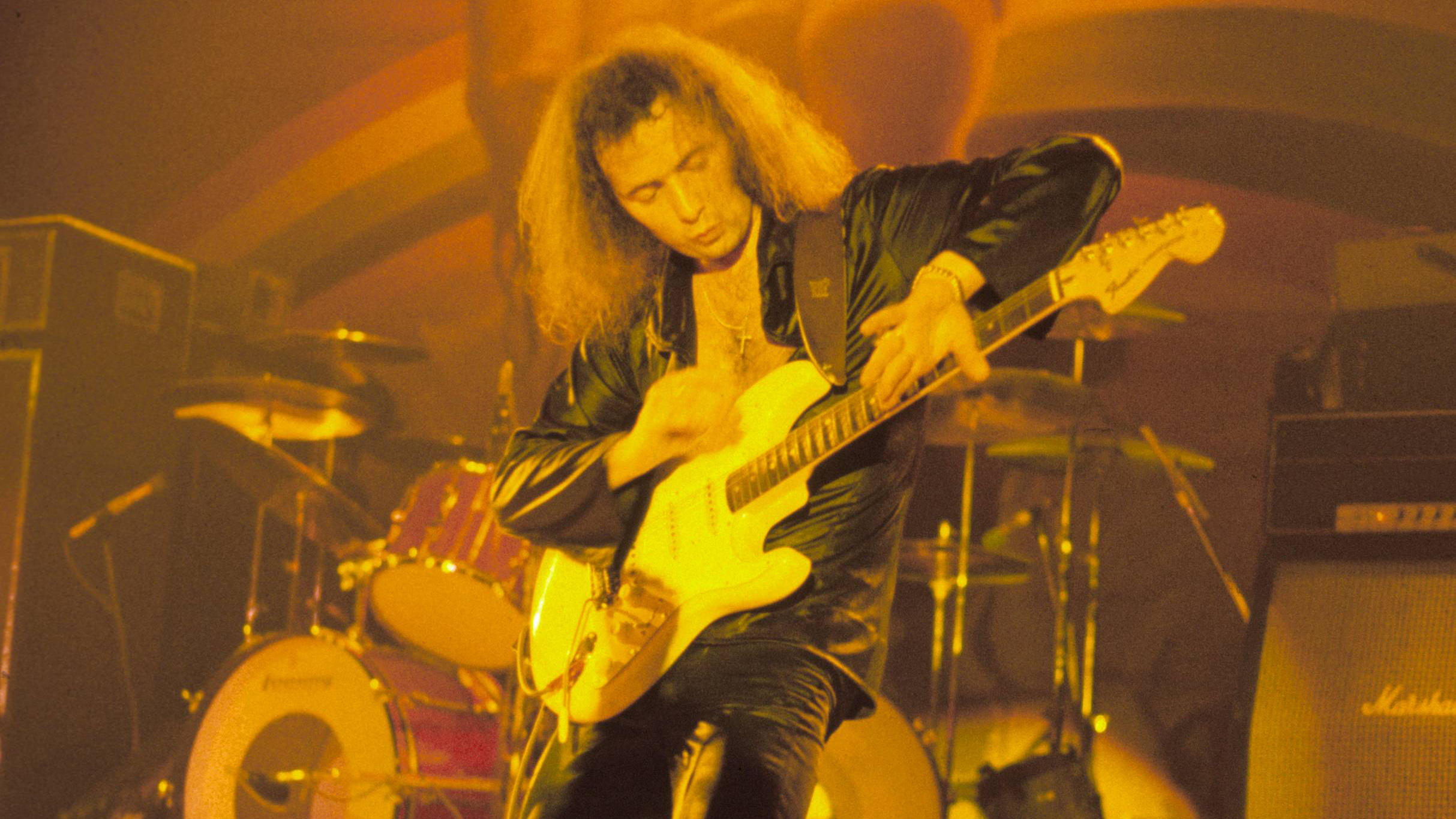“I think every serious fan of hard rock music would love Stargazer. It’s one of those all-time epic masterpieces. It’s Ritchie Blackmore in his most experimental mode”: How guitar hero Blackmore created his magnum opus with Rainbow
The legendary track that inspired Metallica, Opeth, Dream Theater and Iron Maiden's Bruce Dickinson

Released in 1976, Rainbow’s Stargazer made its mark as one of the most creatively ambitious rock songs of its time.
Recorded by the all-star cast of Ritchie Blackmore on guitar, Ronnie James Dio on vocals, Cozy Powell on drums, Jimmy Bain on bass and Tony Carey on keys, Stargazer spans eight and a half minutes and marries the thunder of early heavy metal with a big fat dose of Eastern mysticism.
In that sense, it follows a similar musical concept to Led Zeppelin’s Kashmir, which was released in February 1975 as a cornerstone of Zep’s double album Physical Graffiti.
Stargazer is the most celebrated and significant track on Rainbow’s landmark second album, titled Rising and recorded at Musicland Studios in Munich with producer Martin Birch, who had worked with Blackmore’s previous band Deep Purple.
The material for this album came from the long extended jams that started in September 1975, with founding members Blackmore and Dio encouraging new recruits Powell, Bain and Carey to improvise.
The Munich Philharmonic Orchestra was also hired for the recording of Stargazer – to add further depth and intensify the song’s ominous and neoclassical feel.
“We went into the studio with a 28-piece orchestra,” Blackmore recalled. “But the backing was too flowery, so we kept taking out parts and making it less and less complicated.”
Want all the hottest music and gear news, reviews, deals, features and more, direct to your inbox? Sign up here.
The hired musicians ended up frustrated by how many takes were required of them, with Blackmore admitting: “There was a very fine gypsy violinist who decided to play after the orchestra had finished, but the tape spool ended.” As a result of the technical oversight, “The poor guy was frantically playing and we weren’t recording him!”
Dio’s lyrics for Stargazer tell the story of an evil wizard who forces people into slavery, dominating them “in the heat and the rain, with whips and chains”.
The narrator sings of how “we built a tower of stone, with our flesh and bone”, lamenting how “too many died” in the process.
Their misery comes to an end when the wizard “falls instead of rising” while attempting to climb the tower “to the top of the world”.
Naturally, the music is as every bit as epic as the story being told.
It begins with an incredibly powerful and frenetic drum solo from Powell, before Blackmore and Bain come in with an E minor pentatonic riff that uses the open E-string and a chromatic run of three notes on fifth, sixth and seventh frets of the A-string.
The bridge sections add a sense of impending doom thanks to the usage of a minor second interval, sticking with a single-string B octave idea before closing with a dramatic C power chord at the end of each bar.
This is what Blackmore chose to solo over at 3:22 – in what many fans regard as his finest lead work.
A lot of the ideas come from the B Phrygian Dominant scale, which is the fifth mode of E Harmonic Minor. Blackmore himself once described the track as being in a “half Turkish scale”.
The first 10 bars are played slide, building up to the faster runs Blackmore chose to fret with his fingers.
There’s a passage towards the end which utilises the open high E-string, with Blackmore pulling off the 5th, 3rd, 2nd, 7th, 8th, 10th frets against the E pedal tone.
These notes all come from the B Phrygian scale, which is the third mode of G Major.
What really catches the ear, however, is when Blackmore decides to go off-piste and start firing out notes outside of that scale.
He plays a run that chromatically climbs one fret at a time until its explosive peak, where he bends a whole tone up from the 17th fret of his high E – turning the minor seventh into a root.
This concept of using the ‘wrong’ notes after so many right ones is a musical device that Blackmore has employed many times as a tool to catch listeners off-guard. Another famous example is his solo in Deep Purple’s Highway Star.
The solo in Stargazer ends with an ascending line played in quarter notes going up to the 22nd fret of his high E-string, with some heavy delay applied at the very end as a psychedelic effect.
Blackmore has gone on record to cite Rising as his favourite Rainbow album, and has referred to Stargazer as “my favourite track of the lot”, highlighting it as one of his greatest musical accomplishments.
It is also this song that convinced Deep Purple bass player Roger Glover to join Rainbow later down the line for 1979’s Down To Earth album.
Stargazer would go on to inspire countless musicians down the line, including Iron Maiden singer Bruce Dickinson, who once described it as something that completely changed the face of music.
In a 2024 interview, Dickinson recalled hearing Stargazer for the first time: “I was like ‘Who is that voice?’ I was like 16 years old, going, ‘What the hell, that’s Ritchie Blackmore!’ I didn’t know Rainbow existed.”
He continued: “It was on a little transistor radio in the garage. I waited until it finished and the guy said: ‘That was Rainbow and Stargazer’. I was like ‘Oh my god!’”
The track has been covered many times – most famously by Metallica in their Ronnie Rising Medley on the 2014 Dio tribute album This Is Your Life, and by Dream Theater as a bonus track on their 2009 album Black Clouds & Silver Linings.
In a 2017 interview with Rolling Stone, Opeth singer/guitarist Mikael Åkerfeldt revealed just how much impact Stargazer had on his life.
“It’s Ritchie Blackmore in his most experimental mode,” he said, “breaking away from Deep Purple and coming up with these masterpiece, epic songs.”
Åkerfeldt went on to reveal how he listens to Stargazer while going on “old-man walks”, even admitting how “tears start rolling because it’s so fucking good.”
He added: “I think every serious fan of hard rock music would love Stargazer. It’s just one of those all-time epic masterpieces.”
Amit has been writing for titles like Total Guitar, MusicRadar and Guitar World for over a decade and counts Richie Kotzen, Guthrie Govan and Jeff Beck among his primary influences. He's interviewed everyone from Ozzy Osbourne and Lemmy to Slash and Jimmy Page, and once even traded solos with a member of Slayer on a track released internationally. As a session guitarist, he's played alongside members of Judas Priest and Uriah Heep in London ensemble Metalworks, as well as handling lead guitars for legends like Glen Matlock (Sex Pistols, The Faces) and Stu Hamm (Steve Vai, Joe Satriani, G3).
You must confirm your public display name before commenting
Please logout and then login again, you will then be prompted to enter your display name.




